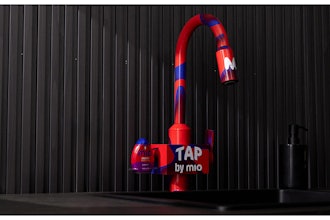In 2017, the UK government announced the ‘Made Smarter Review’, a proposal for Britain to lead the world in a new industrial revolution. The ambitious review, which runs alongside the UK government’s Industrial Strategy that sets out a long term plan to boost productivity in British industry, proposed creating innovation hubs and a national organisation that could turn Britain into a global Industry 4.0 brand.
The opportunity here is immense; the introduction of automation within the manufacturing industry it could inject £455 billion into the UK economy, boost growth by 3 percent per annum and create a projected 175,000 skilled jobs.
It is predicted that this industrial digitization will lead to a shift in production and the creation of a digital industrial supply chain where products are developed, manufactured, and monitored in real-time through a single, integrated process. However, to achieve this, Industry 4.0 will require a revolution in industrial communications to create continuously ‘live’ data sharing capabilities between machines. This will enable vital data, from sensor measurements to control signals, to be continuously exchanged in real-time so that all critical industrial machinery, from robots to 3D printers, can be instantly accessed and controlled remotely by humans.
With autonomous machinery making critical components such as railway infrastructure or aircraft engines, engineers will need to be able to remotely monitor and maintain them to instantly detect and fix software faults. Continuous ‘live data’ will also be critical to enable ‘robot workers’ to operate in seamless synchronicity, continually choreographing their actions in response to live location or measurement data from other robots.
There are also plans to radically decentralise manufacturing through an ‘Internet of Thinking’ — based on a ‘DIY’ sensor network that can autonomously analyze information, rather than sending it for remote analysis. This will mean that if an industrial robot notices its own equipment malfunctioning, it will be able to recognise what it needs to do and self-correct any faults. However, such systems will need external human supervision in case of faults that they fail to detect.
Cybersecurity teams will also need to be able to remotely monitor for malicious interference and intervene in manufacturing machinery to avert industrial sabotage by cyberattack. For example, researchers have previously shown how to hack into 3D printer files to make a drone crash by altering the design specifications for the propellers.
The need for data to be digitally omnipresent across the industrial IoT ecosystem the moment it is generated actually mirrors the thinking behind the traditional ‘IT help desk’. It reflects the need for a genuinely low-latency, live connection and two-way exchange of information that enables the sharing of everything from audio and video to images and text among millions of devices.
However, there are currently no open standards for industrial remote communication that allows machines from any vendor to share live data and enable remote human intervention across all manufacturing equipment and components. This is because major manufacturing companies currently have proprietary protocols in place for the remote access to machinery that only work with their own-branded machines. If this system is rolled out across Industry 4.0 efforts, it will create a fragmented industrial IoT landscape where machines aren’t able to communicate with each other and control rooms won’t be able to exercise the same degree of control over all machinery in operation. This undermines the vision of fully digitally-integrated end-to-end supply chains, and it could also make true automation impossible as this would require real-time remote supervision of all machinery.
Crucially, it could also jeopardise cybersecurity protocol by making some machines inaccessible to cybersecurity experts. At a time where vulnerabilities are constantly being discovered in devices and IoT is becoming more of a target for cyberattackers, it is critical that the industry makes it as easy as possible for security professionals to fight back. It is only when they can access any machine that they are able to mitigate the risk.
The only way to achieve the UK government’s vision is to create a safe, open platform for end-to-end data exchange across the entire industrial supply chain. This will enable safe and low-latency, multi-directional communication and crucially, it would mean that supply chain connectivity is fully ‘future-proofed’ and can seamlessly incorporate any new industrial IoT machines that emerge in the future. It would also make technicians, cybersecurity personnel, engineers and factory staff digitally omnipresent across a factory floor of diverse and varied equipment, and enable them to instantly remote into any machine to fix faults.
If we are to fully realize the vision of an interconnected industrial supply chain worldwide, we must change the way we manage data. We must challenge rival industrial manufacturers to convene around an open standard approach to create a truly connected Industry 4.0.
Adam Byrne is CEO of RealVNC.






















